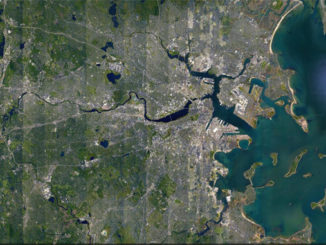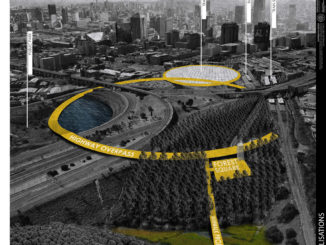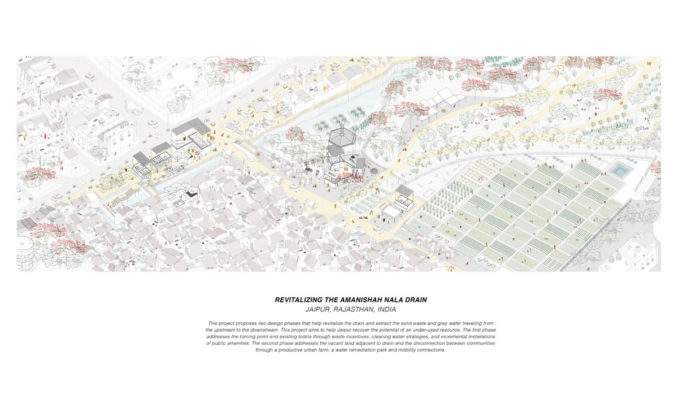
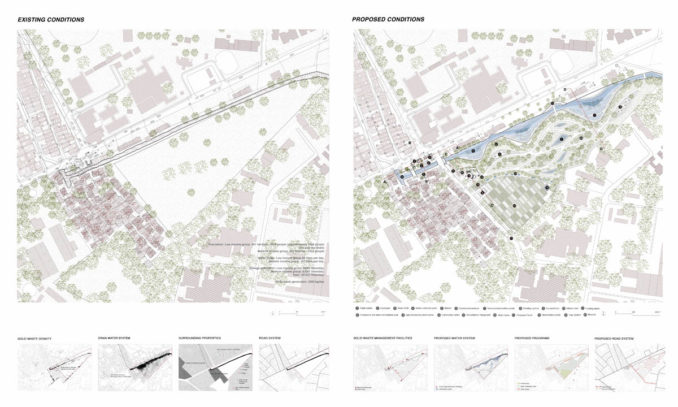
The Amanishah Nala Drain is on the northwest of the Jaipur city. It is critical to the water and sewage management of Jaipur as it connects the upward stream from the Aravalli Hills to the downward stream of the Dravyavati River. Due to Jaipur’s severe seasonal fluctuations of monsoons, the drain collects an annual average of 6 million cubic meters of water from the mountain, as well as, approximately 1 million cubic meters per hour of street stormwater during the monsoon season. This site is most vulnerable due to the downstream accumulation of solid waste, inaccessibility of community employment, social vulnerability between income classes, and the lack of clean and safe public amenities.
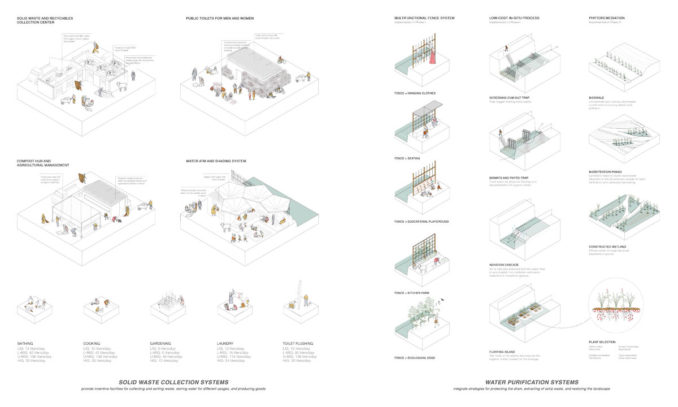
In response to the existing conditions, the proposed revitalization incorporates two phases. Phase I addresses the turning point and existing toilets through waste incentives, cleaning water strategies, incremental installations of public amenities. Phase II addresses the vacant land adjacent to the drain and the disconnection between communities through a productive urban farm, a water remediation park and mobility connections.
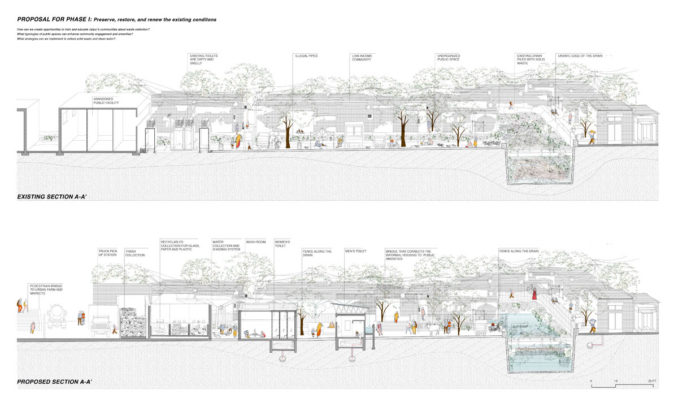
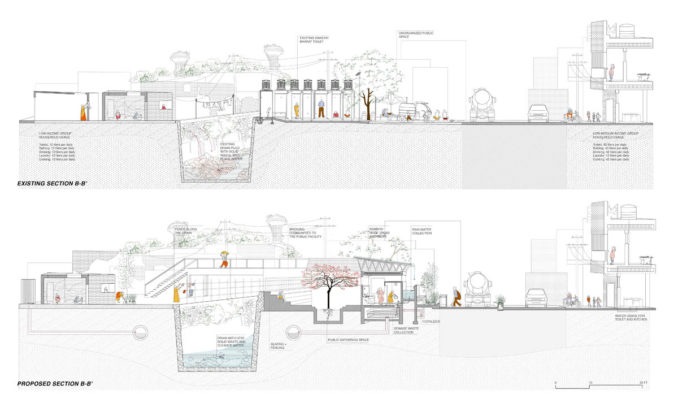
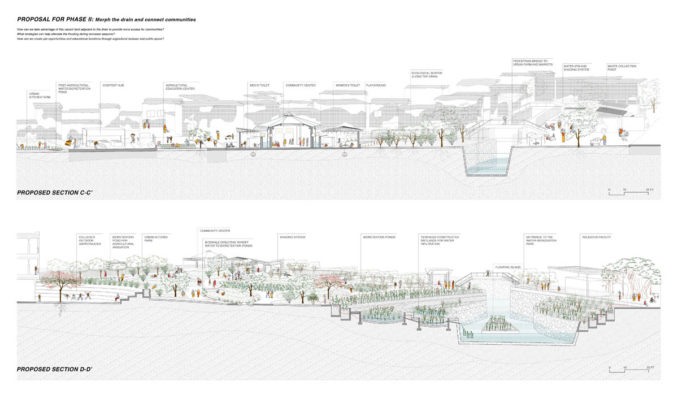
In Phase I, this project proposes a decentralized waste collection system with incentives for water and agricultural needs. The incentives aim to train communities on how to sort and properly dispose of trash and recyclables. Waste is weighed and in exchange collectors receive waste collection coins for household water at the Water ATM, as well as, plumbing water at the toilets. Both systems collect stormwater through canopy tanks and roofing. In place of the existing Swachh toilets, this proposal implements toilets for both genders that flank a public courtyard and bridges across the drain. In addition, a series of strategies help restore the existing drainage system. The proposed fence system will prevent people from disposing waste into the drain and creates opportunities for multifunctional usages. Also, low cost processes for water purification and waste collection will be implemented in the first phase.

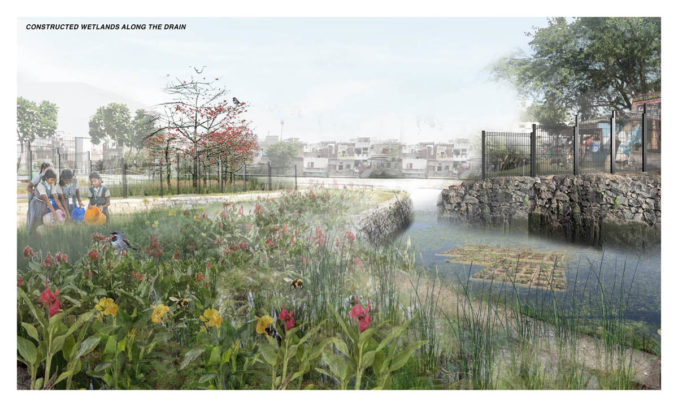
In Phase II, this project implements a community center that provides public amenities, a safe and educational space for children and women, and a large gathering space for cultural celebrations. The proposal for a playground creates opportunities for learning and engagement. As well, toilets separated by gender are situated on either side of the center and accessible for all surrounding communities.

To bridge all communities, this project proposes a new road and pedestrian paths that connect to the surrounding schools and public amenities. To revitalize the drain, this proposal transforms the vacant land into a water remediation park by changing the drain morphology from steep straight to terraced curve using the cut and fill strategy. These design strategies will help avoid flooding into neighborhoods, provide more room for stormwater, and slow down the water speed during monsoon season. Additionally, the terraced bioretention ponds and wetlands help filtrate greywater during the phytoremediation process and can also store irrigation water for the urban kitchen farm.
Next, this proposal designates part of the vacant land for an urban kitchen farm and a compost hub. The agricultural production aims to improve the nutrition status of communities, create job opportunities, and provide educational practices. As well, the on-site compost center produces fertilizer for the farm. The management facility provides agricultural needs in exchange for waste collection coins. After harvesting, the farm goods can be sold along the new road.
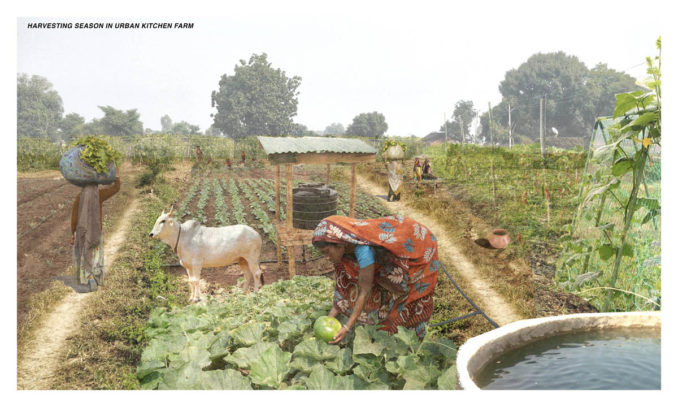
Overall, this project proposes two design phases that help revitalize the drain and extract the solid waste and greywater traveling from the upstream to the downstream. The revitalization of the Amanishah Nala Drain aims to recover Jaipur’s under-used resource.
Project, Text and Image Credits:
Qinmeng Yu and Allison Ta – University of Virginia


